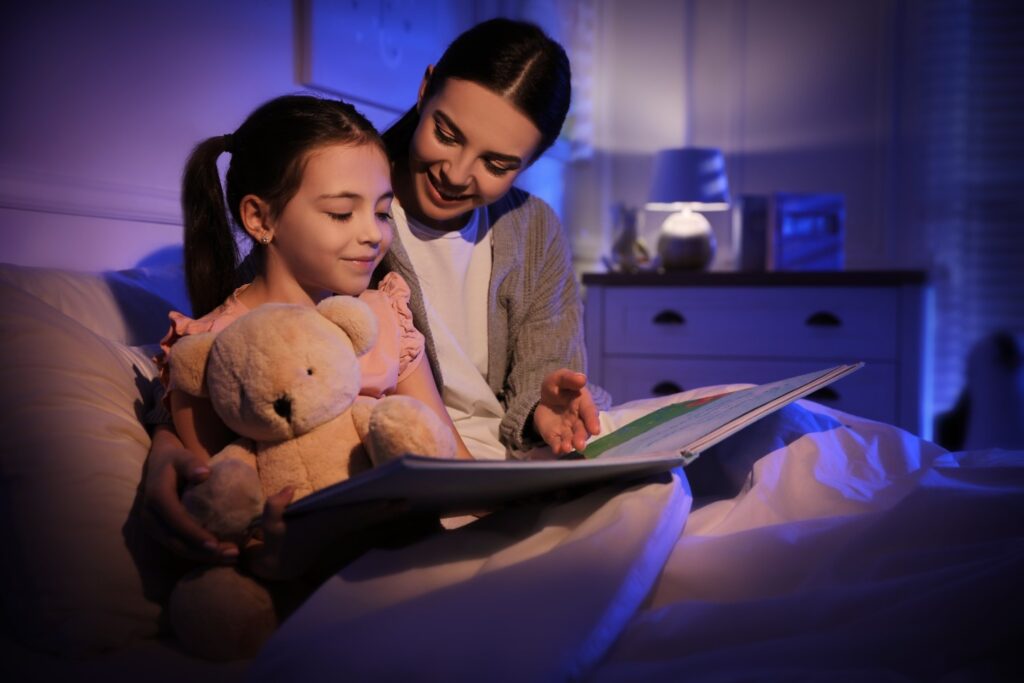How to Create a Screen-Free Bedtime Routine for Kids
Published on
August 18, 2025

Posted By,
Pegasus Society

A screen-free bedtime routine can greatly benefit a child’s overall well-being, especially their sleep quality. Today, children are constantly exposed to screens through TVs, tablets, phones, and gaming devices. This screen time can easily disrupt their nighttime habits. The blue light from these screens prevents the body from producing melatonin, the hormone that helps regulate sleep. This can result in trouble falling asleep, restless nights, and tired mornings.
By creating a bedtime routine without screens, parents signal to their children’s bodies and minds that it is time to relax and prepare for rest. Such a routine might involve calming activities, such as taking a warm bath, listening to soft music or bedtime stories, engaging in quiet play, or spending a few minutes reading together. When followed at the same time each night, including weekends, these soothing rituals help set the child’s internal clock, making it easier to sleep. A steady and caring routine not only encourages better, more restorative sleep but also strengthens the bond between parent and child, turning bedtime into a moment of comfort, connection, and peace instead of a nightly struggle.
By creating a bedtime routine without screens, parents signal to their children’s bodies and minds that it is time to relax and prepare for rest. Such a routine might involve calming activities, such as taking a warm bath, listening to soft music or bedtime stories, engaging in quiet play, or spending a few minutes reading together. When followed at the same time each night, including weekends, these soothing rituals help set the child’s internal clock, making it easier to sleep. A steady and caring routine not only encourages better, more restorative sleep but also strengthens the bond between parent and child, turning bedtime into a moment of comfort, connection, and peace instead of a nightly struggle.
Why a Screen-Free Routine Matters
Screens play a big role in childhood today. However, research shows that cutting back on screen time in the evening can greatly improve sleep. Reducing screens at night also promotes mindfulness, creativity, and relaxation. For families that want to support a screen-free childhood, bedtime is an ideal time to step away from digital devices and focus on meaningful offline moments.Practical Steps to Build a Screen-Free Bedtime Routine
- Set a Consistent Bedtime: Children do well with structure. Establishing a bedtime and keeping it the same every night, even on weekends, helps regulate their internal clock.
- Create a No-Screens Zone: Keep TVs, tablets, and smartphones out of the bedroom. This clearly communicates that bedtime is for resting and not for entertainment.
- Introduce Calming Activities: Reading a bedtime story, quietly coloring, or listening to calming music tells children that the day is winding down and it's time to relax.
- Use Relaxing Rituals: A warm bath, gentle stretches, or dimmed lights help prepare the body for sleep by lowering stimulation and promoting calmness.
- Model Screen-Free Habits: Children learn by watching their parents. When they see you avoiding screens before bed, they are more likely to mimic that behavior.
The Role of Community Support
Parents do not have to make these changes by themselves. Groups like the Pegasus Society for parents actively support families in prioritizing well-being through screen-free activities. By connecting with other parents with similar goals, you can share ideas and experiences while creating healthier bedtime routines and encouraging a balanced lifestyle for your children.
Conclusion: A screen-free bedtime routine is more than just a way to improve sleep; it’s a chance to spend time together, connect, and find calm. By making small, steady changes, parents can help their children rest well and grow up valuing a screen-free childhood that fosters creativity, imagination, and emotional health.





